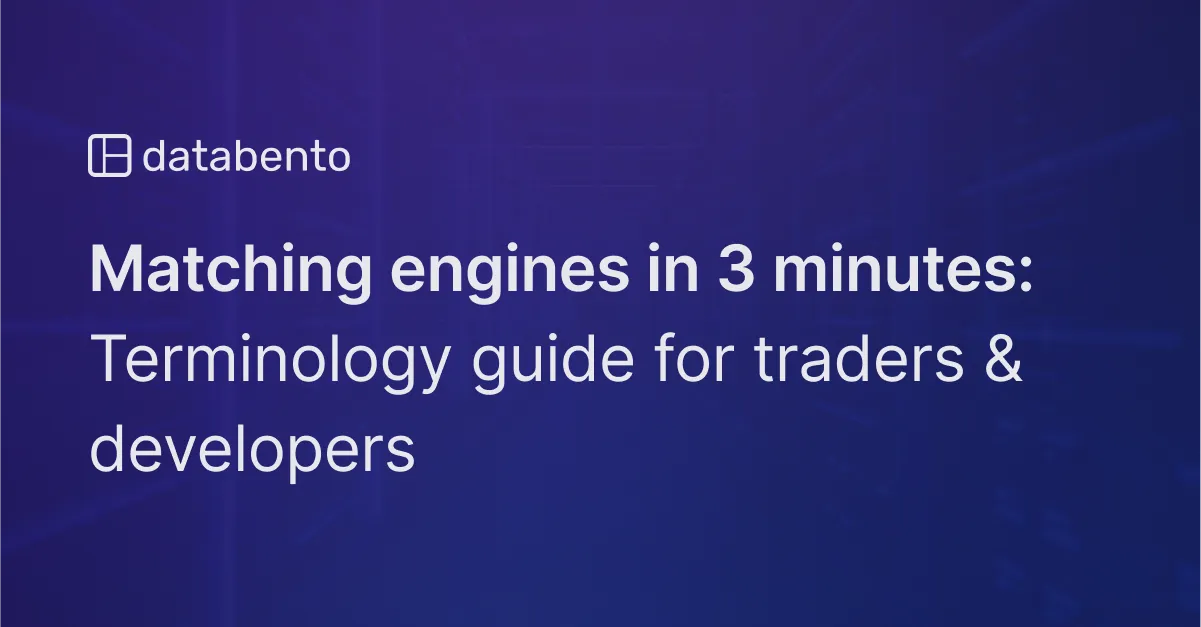Matching engines in 3 minutes: terminology guide for traders and developers

This guide is intended for traders, researchers, and engineers who are involved in algorithmic trading. It’s also useful for network and systems engineers who are making their first foray into financial trading infrastructure.
These are key terms that you’ll find useful in navigating colocation and server hosting for a trading system, and also in describing how your system interacts with a trading venue’s matching engine.

Primary colocation. The site with the lowest latency to the matching engine. Usually the data center where the matching engine is housed, but this is not always the case—some venues only allow connectivity outside of the data center where their matching engine resides. For example, NYSE’s primary colocation site is in NYSE’s Mahwah data center.
Proximity hosting. Any non-primary colocation site offering a latency advantage due to proximity to the matching engine, typically within the same city or nearby. For example, any hosting location in New York or New Jersey could be considered a proximity hosting site for Nasdaq, whose primary colocation is in Carteret.
Point of presence (PoP). Any location offering direct connections to a trading venue without intermediaries other than the primary colocation site. For example, EBS has PoPs in Secaucus and Slough.
Latency equalization. Ensuring equal latency to the matching engine. Typically achieved by spooling optical fiber and ensuring equal length of cross-connects to the matching engine. Also called fiber equalization.
Handoff. The point where traffic passes between the matching engine’s and the trading participant’s networks. A cross-connect to a matching engine’s extranet.
Boundary switch. A network switch on which a trading venue’s handoff terminates.
Load balancer. A typical part of a matching engine. Distributes messaging traffic across servers or gateways that compose the matching engine.
Wire protocol. Messaging protocol used for data and order entry, such as ITCH, and OUCH. Describes format and structure of messages. This is in contrast to higher-level APIs like REST that are often found at crypto venues.
Direct market access (DMA). The ability to send orders directly to a matching engine without intermediaries.
Matching algorithm. The rules that determine order priority and how trades are matched. Examples include pure FIFO, pro rata, and price-broker-time.
Gateways. The servers that receive order messages or publish market data.
